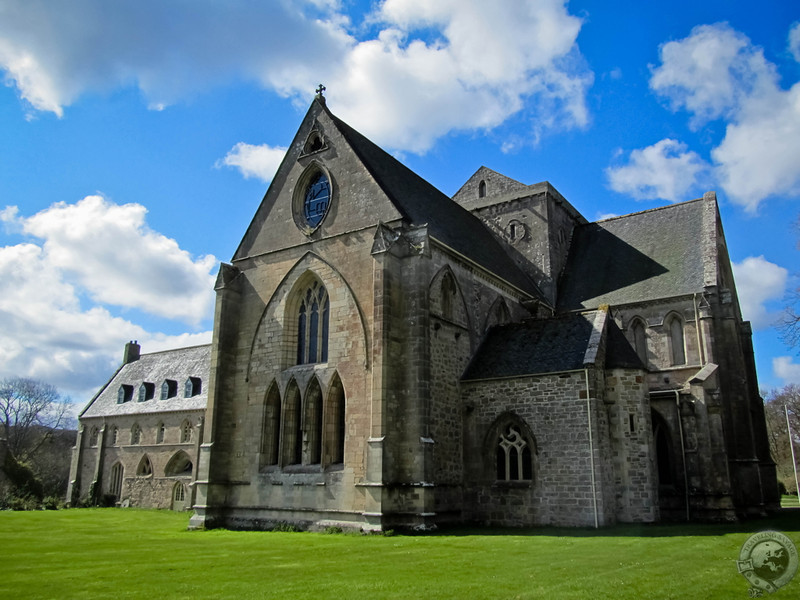The roads of modernity lay over northern Scotland like a thread-bare cardigan. The green spaces between their meandering borders weave a chronological legerdemain and trick every sense into believing the epochs and eras of time exist concurrently. So Pluscarden Abbey strikes me, blooming in the sun after a brief wooded walk where an abbot clad in a black shroud wandered deep in thought. This glade, south of the massive Heldon Wood somewhere between Elgin and Forres in Moray, rings with silence. The eye-blue sky holds static clouds and the rare stillness of the place shushes all of life’s niggling fears and worries into quietude.
I’m no spiritual maven. I resist religious dogma and abide by no prescribed rules of worship. And yet there is something close to peace in the air at Pluscarden Abbey. I don’t want to write the word “peace” – it sounds so cliché – but that is the closest descriptor of that gentle envelope. I see a monk chatting with a patron in the small parking lot beneath tall shade trees. Pluscarden has hunkered down here for many, many centuries, but I don’t know its history. I don’t want to know it. I don’t want to analyze anything about the constellation of sensations upon me. Sometimes what we learn only serves to darken our understanding.


Nice. I know that feeling.
In the modern world, it’s increasingly difficult to find a place like you found at Pluscarden where people have built a fairly massive structure—and then left it to the monks and the silence. Often one must climb a mountain to find the kind of silence that lets you hear the inside of your brain.
I’m trying to resist clicking on the “history” link, but I will probably succumb. I hope I don’t have to read about raping, pillaging and burning Vikings and clans, and about religious wars.
Warning: Don’t click on the “history” hyperlink if you want to remember Pluscarden as it is described in this post.